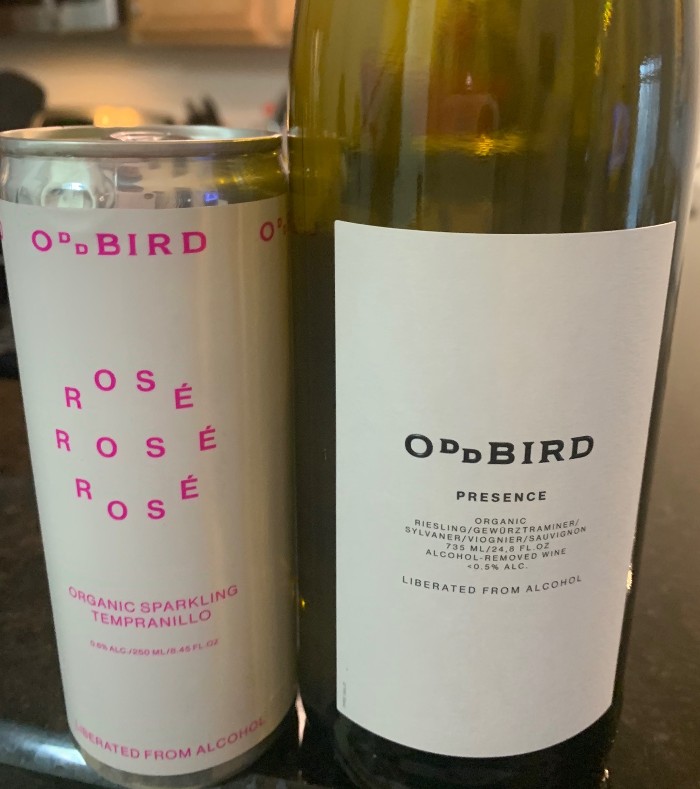
The wine industry, broadly, is in a tizzy about the (perceived) state of affairs: a glut of bulk wine; too many planted acres; a lower appetite for wine especially among younger adults; and a strong movement toward low- and non-alcohol beverages buttressed by stark warnings from the World Health Organization and public health officials that “no” level of alcohol consumption is safe. Certainly, these concerns are real. Markedly higher input costs for producers are being passed along to consumers whose frustration is evident in their purchasing, and you can’t discount the perceived pretentiousness that lingers in the industry, driving some consumers increasingly to craft beers, cocktails, hard seltzers, and even energy drinks.
The industry has taken notice. In fact, several years ago some smart people recognized a potential market for low- and no-alcohol (LoNo) wines; I remember trying a FRE brand “no” wine in 2011 during a 9-month dry period aimed at some improvement in my migraine attacks. It wasn’t very good and tasted nothing like wine. In 2012, having resumed my love affair with wine, I started trying some low-alcohol versions of popular if unremarkable brands, with 11% ABV or under. These are typically marketed with a focus on diet, with lower calories, sugar, and carbs, and noticeably different from 12-15% ABV wines, which can be head-rush inducing and place one horizontal after a couple glasses. I’ve tried some from Skinny Girl (100 calories, 10% ABV) and even Cupcake Light Hearted (80 calories, 8% ABV), brands I would never have previously touched, and I enjoyed them both, with the caveat that neither would have been my first choice.
More recently, I went back to the No/Lo alcohol well, via the website of Boisson, a New York City-based retailer with stores in Manhattan, Brooklyn, LA, and Miami that sells only non-alcohol wines, beers, cocktails, ciders, and spirits. I think it’s outstanding that such retailers exist, as I find it frustrating when I can’t even get a Heineken 0.0, much less anything else alcohol-free, in most bars outside Philadelphia. I ordered four wines from Boisson: Le Petit Etoile Cabernet Sauvignon (which disappeared from Boisson’s website when I went back to check the price); Giesen New Zealand Sauvignon Blanc at $16; Leitz Eins Zwei Zero Blanc de Blancs at $22; and Leitz Eins Zwei Zero Riesling at $18. Again, the results were somewhat disappointing, but certainly not entirely.
The only truly unpalatable drink was the only red I tried, the Cabernet, which was truly awful, and after a half-glass, I poured it down the sink. I was raised on Welch’s red grape juice, which I loved (and still do) and which has strong and delightful flavors. As it’s not really wine, I have a difficult time describing in wine terms how unpleasant the Cabernet was, but it just was. Maybe it’s a coincidence, but perhaps the Boisson people just realized it, too, which may be why it was removed from their site. By contrast, the NZ Sauvignon Blanc was nice, with that familiar green pepper aroma and slightly grape-fruity taste. I recommend! The Riesling, while lacking the familiar “petrol” aroma, and a bit low in lip-smacking acid, has a nice citrusy and apricot flavor. The Blanc de Blancs is quaffable, but forgetful….and I can’t tell you what varieties are in it, because they weren’t listed on the Boisson website, and when I emailed to ask, the very polite but odd answer was that they don’t know because the producer doesn’t say.
It’s important to understand the distinction between “non-alcoholic” and “de-alcoholized” wine. Non-alcohol can mean that’s it’s really just grape juice, never fermented. De-alcoholized means it was fermented and then the alcohol was removed by one of three processes. More about that in a moment.
More recently, I tried two wines from Odd Bird, via The ZERO Proof, another retailer: Odd Bird Sparkling Rosé in a can from Tempranillo, and Presence, an interesting combination of Riesling, Gewürztraminer, Viogner, Sylvaner, and Sauvignon Blanc. It wasn’t cheap; $63 incl. tax and shipping for the one bottle of white “wine” and the four cans of sparkling, so, basically, these beverages cost as much as the premium-category real thing. And I understand why; they have to ferment the juice as usual and then use another process, in this case vacuum distillation–to remove the alcohol. Both of these were tasty enough, but I cannot honestly say that they provided the tastes or aromas of wine, or the satisfaction that one receives from drinking the genuine article. The mouthfeel, though, was pretty good.
There are actually three ways to remove alcohol from fermented wine: vacuum distillation, spinning cone, and reverse osmosis. Surely, another producer of non-alcohol wine, has good explanations of each, and they use the spinning cone method. I’m going to try their de-alcoholized “wines” in the near future and I’ll let you know what I think. I’m particularly interested in finding a red that’s decent.
As for now, in my view there are a lot of new players out there, and a few older ones, doing their best to develop and offer truly authentic-tasting de-alcoholized “wines.” But I just don’t think the technology is there…yet.
